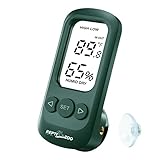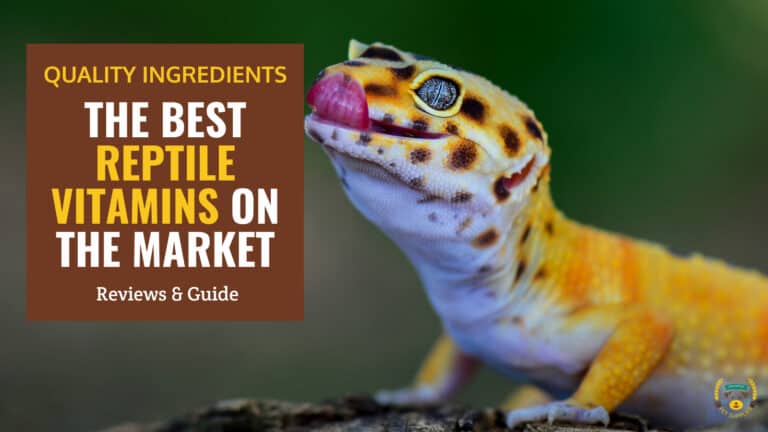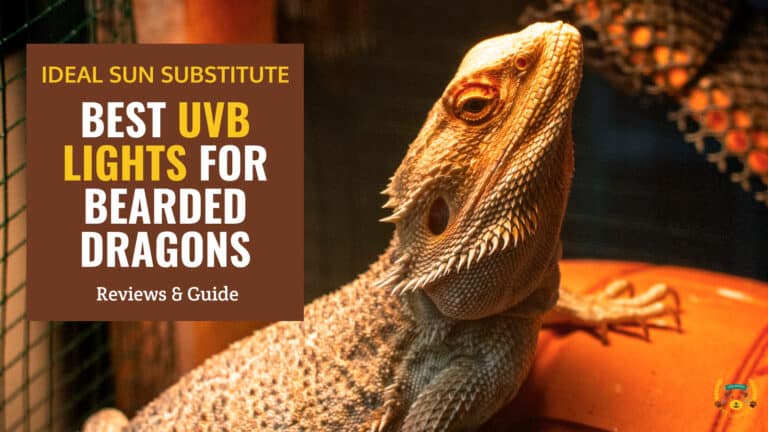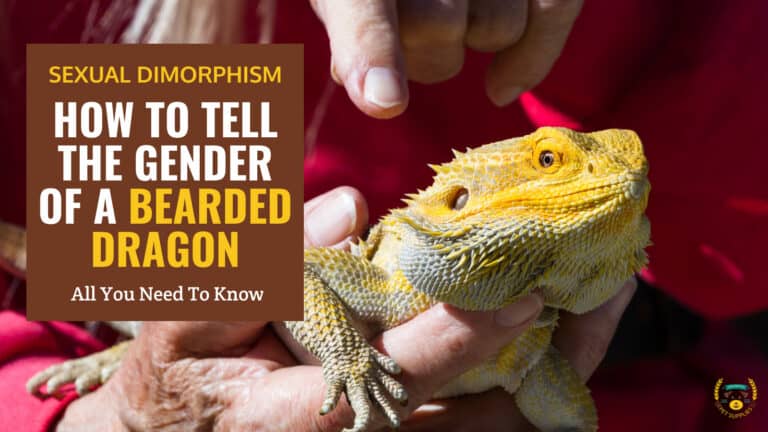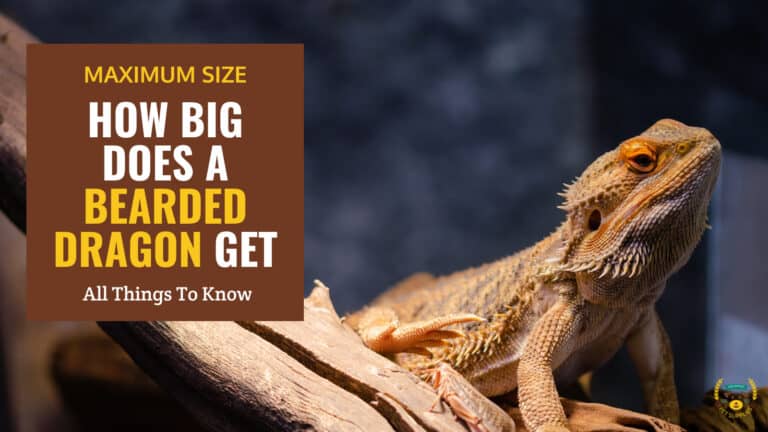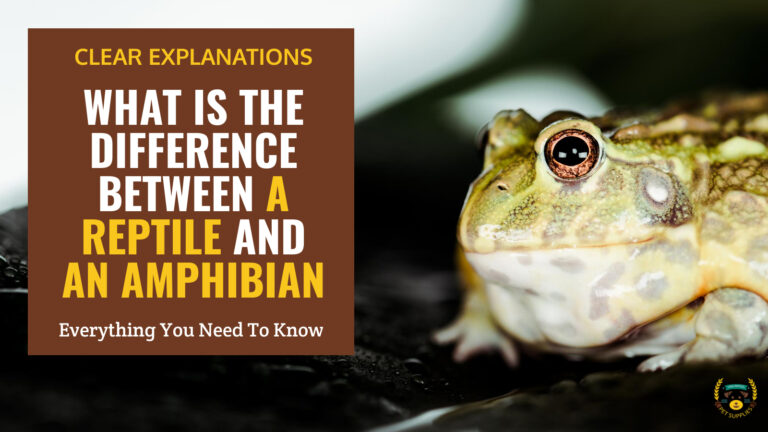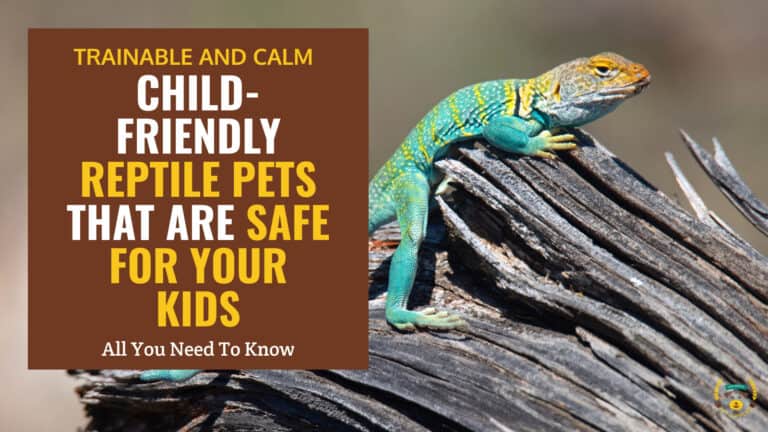How To Lower Humidity In A Reptile Tank
Last updated: April 6, 2024
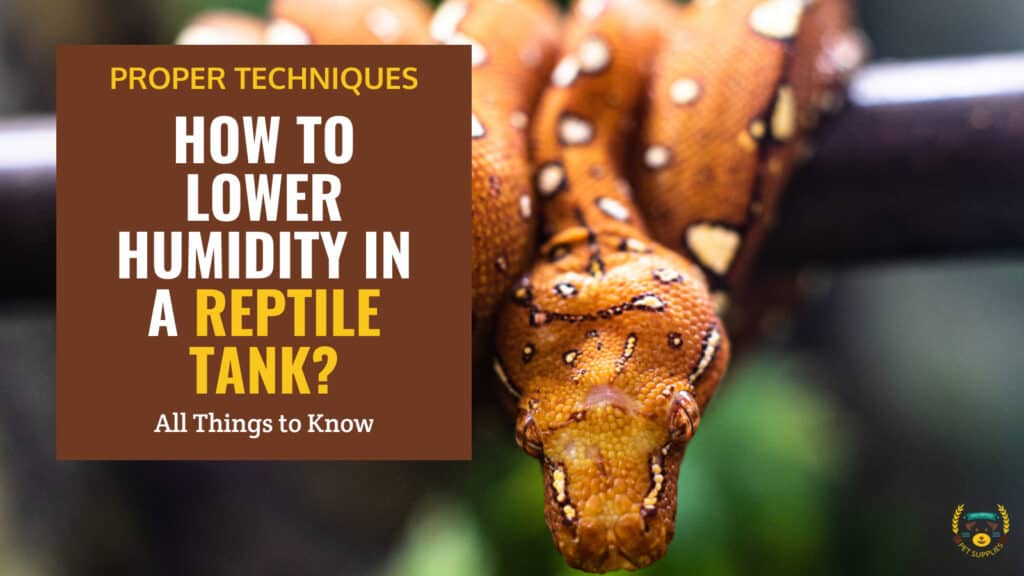
Summary
- Increasing ventilation in the enclosure can effectively reduce humidity levels.
- Choosing an appropriate water dish size and placement can influence humidity.
- Dry rice can be used to absorb excess moisture by placing it in a sock and positioning it in the enclosure.
- Hygrometers are essential tools for measuring humidity accurately within reptile enclosures.
- Correct placement of hygrometers and monitoring trends help maintain consistent humidity levels.
- Substrates play a crucial role in humidity control; their choice impacts moisture retention.
- Proper substrate management techniques, including spot cleaning and misting, contribute to humidity control.
- Recognizing signs of low humidity (dry skin, respiratory issues) is important for reptile well-being.
- Strategies for raising humidity levels include misting, using humid hides, adjusting substrates, and adding live plants.
Reptiles, being cold-blooded creatures, heavily depend on their environment to regulate their body temperature. Unlike mammals, who can internally produce heat, reptiles rely on external warmth to thrive. This is where humidity enters the equation. Reptiles require specific humidity levels to ensure their bodily functions are in check.
As much as humidity is vital, improper levels can lead to dire consequences. Excess humidity can foster the growth of harmful microorganisms such as bacteria, mold, and fungi within the enclosure. These unwelcome guests can lead to various health issues, including respiratory infections. On the other hand, insufficient humidity can cause dehydration and stress, and hinder the shedding process.
In this comprehensive guide, we'll explore the varying humidity needs of different types of reptiles and discuss the potential dangers of both high and low humidity levels. We'll equip you with the knowledge and tools to monitor, regulate, and adjust humidity in your reptile's enclosure to ensure their health and happiness.
The Dynamic Role of Humidity in Reptile Care
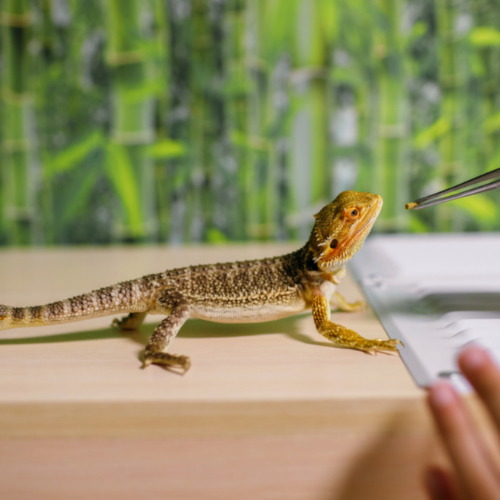
As any reptile enthusiast knows, creating a thriving habitat for these remarkable creatures extends beyond merely providing food and shelter. One of the lesser-known but equally vital components of reptile care is humidity- the amount of water vapor present in the air, which has a profound impact on reptile health and well-being. In this chapter, we will uncover the intricate relationship between humidity levels and reptile life.
The Humidity Spectrum: A Diverse Set of Needs
Just as reptiles come in a mesmerizing array of species, each with its unique characteristics, they also exhibit varying humidity requirements. To better understand these diverse needs, let's explore the three distinct categories of reptiles based on their natural habitats:
Desert Reptiles: Embracing the Arid Environment
Desert-dwelling reptiles, such as the iconic leopard gecko, have evolved to thrive in arid conditions. These reptiles have adapted to conserve water and withstand low humidity levels. For them, high humidity can spell trouble, leading to discomfort and even health issues.
Try to keep the humidity level between 30%-40% for the well-being of your animals.
Temperate Reptiles: Balancing Humidity for Comfort
Reptiles hailing from temperate regions, like the bearded dragon, occupy a middle ground when it comes to humidity. They require moderately higher humidity levels compared to desert reptiles. Striking the right balance ensures proper hydration and shedding, promoting overall health.
Tropical Reptiles: Thriving in High Humidity Conditions
Tropical reptiles, such as the enchanting chameleon, are inhabitants of lush, humid environments. These creatures thrive in humidity-rich atmospheres. Maintaining high humidity levels in their enclosures is crucial for their hydration, respiratory function, and overall vitality.
The humidity range in the habitat of your tropical reptile must be kept between 65% and 80%.
The Perils of Excessive Humidity
While humidity is essential for various physiological processes, excessive levels can lead to a cascade of problems.
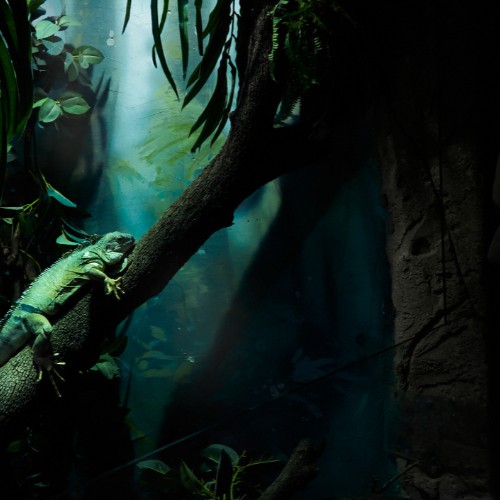
One of the most alarming consequences is the increased risk of respiratory infections. Reptiles not adapted to high humidity are susceptible to developing respiratory challenges, causing symptoms like lethargy, difficulty breathing, and loss of appetite.
Moreover, overly humid environments create breeding grounds for unwelcome guests such as bacteria, mold, and fungi, which can compromise the well-being of both reptiles and owners.
The Hygrometer's Crucial Role in Humidity Management
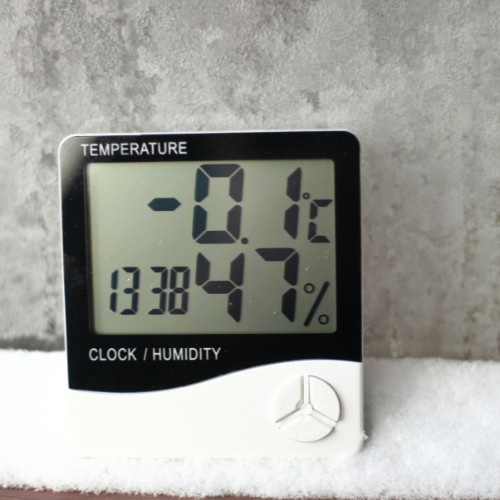
As a conscientious reptile keeper, maintaining optimal humidity levels within your reptile enclosure is a priority. The task may seem daunting, given the diversity of reptile species and their unique humidity requirements. However, armed with the right tools and knowledge, achieving consistency in humidity becomes a manageable endeavor. At the heart of this effort lies the hygrometer—an indispensable instrument that serves as your humidity sentinel.
Selecting a Reliable Hygrometer
When it comes to selecting a hygrometer, accuracy is paramount. The market offers an array of options, ranging from analog to digital devices. While analog hygrometers have a certain nostalgic charm, digital models have proven to be more precise and reliable. Look for hygrometers specifically designed for reptile enclosures, as they are calibrated to provide accurate humidity readings within the range your reptile needs.
Correct Placement for Accurate Readings
Placing your hygrometer strategically is key to obtaining accurate humidity measurements. Consider the following tips for optimal placement:
- Avoid Direct Contact: While it might be tempting to place the hygrometer directly inside your reptile's habitat, it's best to position it outside the enclosure. Direct contact can expose the device to fluctuations in temperature and humidity caused by heat lamps or water dishes.
- Proximity to Reptile: Place the hygrometer in close proximity to your reptile's preferred basking or hiding area. This ensures that the humidity reading reflects the conditions your reptile experiences.
- Ventilation Consideration: Ensure that the hygrometer is not obstructed by any enclosure fixtures and is exposed to the enclosure's overall airflow. This placement helps prevent stagnant pockets of air that might deviate from the actual humidity conditions.
- Monitor Regularly: Keep a schedule for checking and calibrating your hygrometer. Over time, electronic devices may experience slight shifts in accuracy. Regular monitoring ensures that you are always well-informed about your reptile's environment.
Achieving Consistency in Enclosure Humidity
Maintaining steady humidity levels within your reptile's enclosure involves more than just reading the hygrometer—it requires understanding the concept of microclimates. Different areas of the enclosure may have varying humidity levels due to factors like airflow, temperature gradients, and the presence of water sources.
To achieve consistent humidity:
- Create Microclimates: Use strategically placed plants, hides, and water sources to create microclimates within the enclosure. This allows your reptile to choose the humidity level that suits their needs at any given time.
- Monitor Trends: Pay attention to humidity trends over different times of the day and seasons. Some reptiles may prefer slightly higher humidity during specific activities, such as shedding.
- Adjust Gradually: If you need to make changes to the humidity levels, do so gradually. Abrupt changes can stress your reptile. Instead, adjust humidity over a period of days or weeks, monitoring your reptile's response all the while.
Substrates: Humidity's Unsung Heroes
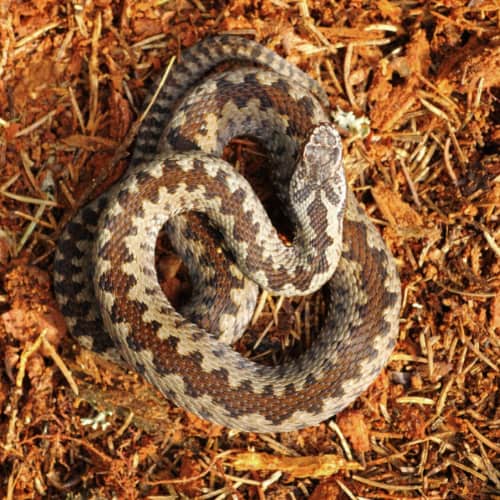
One of the most effective strategies for controlling and lowering humidity levels revolves around the choice of substrates—materials that make up the floor of the enclosure. Substrates play a pivotal role in determining the humidity levels experienced by your reptile, making them the unsung heroes of humidity management.
The Substrate Impact: A Key Player in Humidity Control
Different substrates possess varying moisture-retention properties, influencing the microclimate of the habitat. Here are some key considerations:
- Absorption and Evaporation: Substrates with higher moisture retention capacities, like coconut coir or cypress mulch, retain water and release it gradually into the air through evaporation. This helps maintain a consistently humid environment.
- Arid Environment Simulation: For desert reptiles or species that require lower humidity levels, using substrates like reptile-safe sands or crushed walnut shells can mimic arid terrains and assist in humidity reduction.
- Moisture-Holding Substrates: For reptiles requiring elevated humidity, such as tropical species, coconut coir, sphagnum moss, or organic potting soil are excellent choices. These substrates hold moisture well, contributing to the required humidity levels.
Choosing Substrates Wisely: Desert, Temperate, and Tropical Considerations
When selecting a substrate, it's crucial to align it with your reptile's specific needs and natural habitat.
For desert reptiles, Opt for substrates that simulate arid environments. Sands or crushed walnut shells allow moisture to escape quickly, creating a drier enclosure.
Temperate reptiles from temperate regions benefit from substrates like reptile-safe soil mixes, which retain some moisture but allow for a moderate humidity level.
If you own tropical reptiles, Choose substrates with higher moisture retention, such as coconut coir or sphagnum moss. These substrates provide the necessary humidity for tropical reptiles.
Implementing Substrate Management Techniques
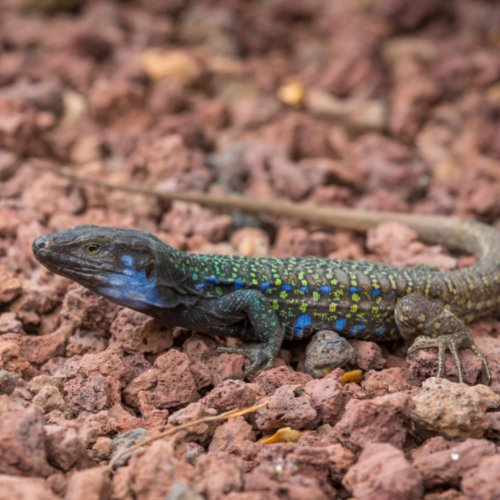
Effectively managing substrates involves more than just their initial selection. Consider these techniques to fine-tune humidity levels:
Spot Cleaning
Regularly remove soiled substrate to prevent excessive moisture buildup and mold growth.
Partial Substrate Replacement
For reptiles with varying humidity requirements, consider creating different zones within the enclosure using distinct substrates.
Misting Strategy
If your reptile requires increased humidity levels, misting the substrate rather than directly misting the enclosure can help create localized humidity pockets.
Monitoring and Adjustment
Continuously monitor your enclosure's humidity using your trusty hygrometer. Adjust the substrate and its moisture content as needed to maintain the desired humidity level.
Signs of Low Humidity: Understanding Your Reptile's Cues
While high humidity levels can lead to respiratory issues and mold growth, low humidity can also pose serious health risks to your scaly companions. Recognizing the signs of low humidity is essential to ensure your reptile's comfort and health. By understanding the cues your reptile provides, you can proactively address low-humidity conditions and make the necessary adjustments.
Recognizing Symptoms: Dry Skin, Respiratory Struggles, and More
Reptiles are remarkably adept at communicating their discomfort through various physiological and behavioral changes. Here are some key signs that may indicate your reptile is experiencing low humidity:
Dry Skin
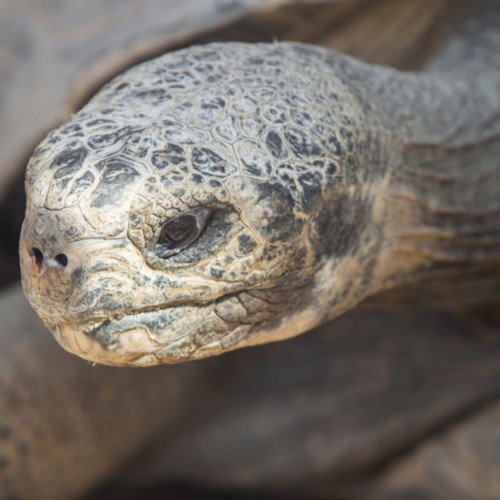
If your reptile's skin appears flaky, dull, or excessively dry, it may be a sign that the enclosure's humidity is too low. Reptiles with healthy humidity levels typically exhibit smooth and vibrant skin.
Difficult Shedding
Low humidity can make shedding a challenging process for your reptile. If you notice retained pieces of shed skin, it might be an indication that the environment lacks adequate moisture.
Respiratory Struggles
Just as high humidity can lead to respiratory issues, so can excessively low humidity. Respiratory infections are a common consequence of chronic dry conditions. If your reptile is displaying signs of labored breathing, wheezing, or frequent mouth gaping, low humidity might be a contributing factor.
Reduced Activity
Reptiles are ectothermic, meaning they rely on external heat sources to regulate their body temperature. In an attempt to conserve moisture, reptiles exposed to low humidity conditions may become lethargic and less active.
Sunken Eyes
Dehydration resulting from low humidity can cause your reptile's eyes to appear sunken. This is particularly noticeable in species with prominent eyes.
Adjustment Strategies: Tailoring Approaches to Your Reptile's Needs
Recognizing these signs of low humidity is the first step in addressing the issue. To provide your reptile with the ideal environment, consider the following strategies for raising humidity levels:
- Increase Mistings: Regularly misting the enclosure with water can help raise humidity levels. Focus on areas where your reptile spends the most time, such as basking spots and hides.
- Use Humid Hides: Providing a designated "moist hide" can offer your reptile a sanctuary with higher humidity. This is especially beneficial during shedding periods.
- Adjust Substrates: If your reptile's substrate allows for moisture retention, dampening it slightly can contribute to a more humid microclimate.
- Add Live Plants: Live plants can help increase humidity levels through transpiration, contributing to a healthier enclosure environment.
- Monitor Hygrometer Readings: Regularly check the hygrometer readings to ensure humidity levels are within the appropriate range for your reptile's species.
Conclusion
Humidity is more than just a number on a gauge; it's an essential element that contributes to the physical, mental, and emotional well-being of your reptile. By ensuring proper humidity levels, you provide an environment that mirrors their natural habitats, allowing them to express their innate behaviors, thrive, and experience less stress.
Your journey to becoming a responsible reptile keeper involves understanding the diverse spectrum of humidity needs, learning to recognize the subtle cues your reptile provides, and implementing effective strategies to create an optimal environment. By embracing these principles, you empower your reptiles to flourish, shedding not only their skin but also the limitations of captivity.
If you still have any questions, please leave a comment below. We will be glad to help you the best we can!



